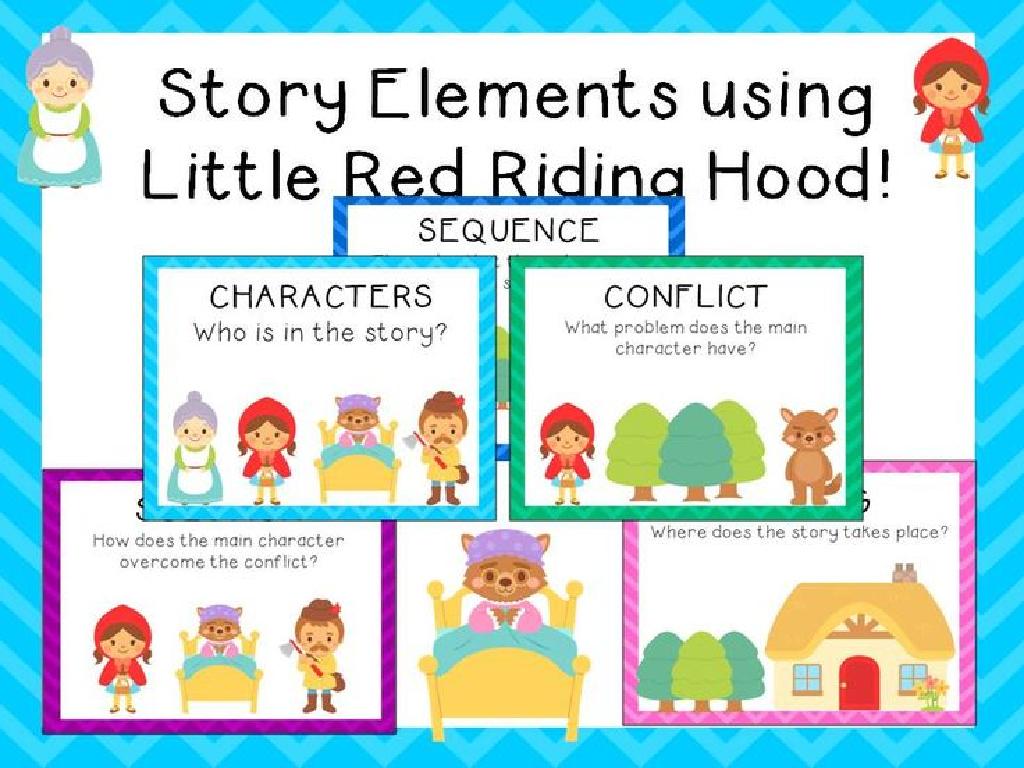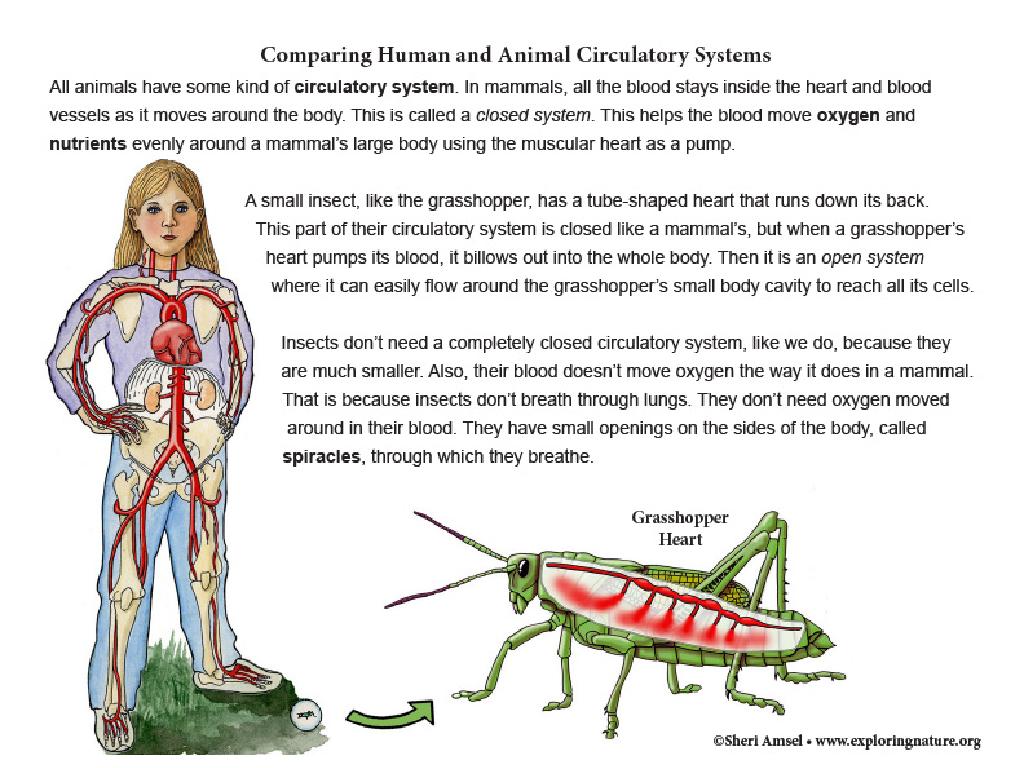Middle Colonies: Founding And Government
Subject: Social studies
Grade: Fourth grade
Topic: English Colonies In North America
Please LOG IN to download the presentation. Access is available to registered users only.
View More Content
Exploring the Middle Colonies
– What were the Middle Colonies?
– A group of colonies in the middle of the North American east coast, including Pennsylvania, New York, New Jersey, and Delaware.
– What is a colony?
– A place ruled by another country, not by its own people.
– Founding of the Middle Colonies
– Settlers from different countries established these colonies for trade and religious freedom.
– How were they governed?
– They had their own governments but were overseen by the English king.
|
Begin with a brief introduction to the Middle Colonies, highlighting their location and the states they included. Explain the concept of a colony to ensure students understand these areas were governed by an outside power. Discuss the founding of the Middle Colonies, emphasizing the diversity of settlers and their reasons for coming to America, such as economic opportunities and seeking religious freedom. Conclude with an overview of the governmental structure, noting that while they had local governments, they were ultimately under the control of the English monarchy. Use maps and historical figures to make the lesson engaging.
Exploring the Middle Colonies
– Locate Middle Colonies on a map
– Use a map to find where these colonies were located
– Names: New York, New Jersey, Pennsylvania, Delaware
– Discuss geography of Middle Colonies
– Fertile land, rivers for transport, varied landscapes
– Understand the climate of the region
– Mild winters and warm summers, good for farming
|
This slide introduces the Middle Colonies as part of the English colonies in North America. Start by showing a map and helping students identify the location of the Middle Colonies. Explain that these colonies were New York, New Jersey, Pennsylvania, and Delaware. Discuss the geography, highlighting the fertile land, presence of rivers which were important for transportation, and the varied landscapes that made up the region. Then, describe the climate, noting the relatively mild winters and warm summers that were beneficial for agriculture. This understanding of geography and climate sets the stage for learning how these factors influenced the development and economy of the Middle Colonies.
Founders of the Middle Colonies
– Key figures in the founding
– Learn about leaders like Peter Minuit
– Reasons behind the founding
– Some sought religious freedom or economic opportunities
– Peter Minuit and Manhattan
– In 1626, Minuit bought Manhattan from Native Americans
– Quakers establishing Pennsylvania
– Quakers, led by William Penn, founded Pennsylvania for religious freedom
|
This slide aims to introduce students to the individuals who played a pivotal role in the establishment of the Middle Colonies and their motivations. Highlight Peter Minuit, who famously purchased Manhattan, as an example of the Dutch influence in the region. Discuss the Quakers, a group seeking religious freedom, and their establishment of Pennsylvania under William Penn. Emphasize the diversity of reasons for founding these colonies, from economic pursuits to the quest for a place to practice religion freely. Encourage students to think about what it would have been like to start a new colony and the challenges these founders might have faced.
Life in the Middle Colonies
– Daily life in the Middle Colonies
– People farmed, traded, and crafted goods.
– Agriculture: The ‘Breadbasket’
– Called ‘Breadbasket’ for wheat and grain exports.
– Cultural diversity
– Home to many cultures and ethnic groups.
– Religious tolerance
– Different beliefs were accepted and respected.
|
This slide aims to give students a glimpse into the everyday life of people in the Middle Colonies. Emphasize the importance of agriculture, as these colonies were known for their vast wheat fields and were nicknamed the ‘Breadbasket Colonies’ due to their significant grain exports. Highlight the cultural diversity, with settlers from various parts of Europe and beyond, bringing a mix of traditions and practices. Discuss how this diversity also led to a unique environment of religious tolerance, where different religious groups could live and worship without persecution. Encourage students to think about how these aspects of life in the Middle Colonies compare to our modern world.
Governing the Middle Colonies
– Types of colonial governments
– Some had charters, others were proprietary or royal
– Assemblies and governors’ roles
– Assemblies made laws, governors enforced them
– Self-government in the colonies
– Colonists had a say in their own rules
– Town meetings for decision-making
– Town meetings allowed colonists to speak and vote
|
This slide introduces students to the various forms of government that existed in the Middle Colonies. Explain that some colonies were governed by charters, which were like rules for the colony given by the king. Others were proprietary, owned by an individual or family, or royal, directly controlled by the king. Colonial assemblies, which were groups of elected representatives, created laws, while governors, appointed by the king or proprietor, enforced them. Emphasize the concept of self-government, where colonists had the opportunity to participate in making their own laws, a novel idea at the time. Town meetings were a place where every colonist could speak about and vote on local issues. This was an early form of democracy. Encourage students to think about how these forms of government compare to our current government system.
The Middle Colonies: A Cradle of Freedom
– Freedom’s role in the Middle Colonies
– The Middle Colonies valued diverse beliefs and freedom of religion.
– From freedom to Revolution
– Ideas of liberty and self-governance sparked the desire for independence.
– Examples of early freedoms
– Freedom of the press and trial by jury were established in these colonies.
|
This slide aims to highlight the significance of freedom in the Middle Colonies and its influence on the American Revolution. Emphasize how these colonies, with their mix of cultures and beliefs, became a place where freedom of religion and expression were highly valued. Discuss how these freedoms contributed to the growing sense of autonomy and eventually led to the colonies’ desire for independence from British rule. Provide examples such as the establishment of freedom of the press with the trial of John Peter Zenger and the implementation of trial by jury as early instances of the liberties that would shape the nation’s future. Encourage students to think about how these freedoms are still important today.
Class Activity: Create Your Colony!
– Imagine founding a Middle Colony
– Choose location, name, and government
– Present your colony to the class
– Explain the reasons for your choices
|
This activity is designed to engage students with the concept of colonization by allowing them to use their creativity and understanding of social studies to design their own colony. Students should consider geographical factors for the location, think creatively for the name, and use their knowledge of government types to decide on their colony’s governance. Provide a brief overview of the Middle Colonies to inspire their choices. For the presentation, encourage students to explain why they chose a particular location, name, and type of government. This will help them connect with the material on a personal level and understand the complexities of founding a new colony. Possible activities: 1) Drawing their colony on a map, 2) Creating a flag for their colony, 3) Writing a short constitution, 4) Designing a brochure to attract settlers, 5) Acting out a town meeting.





/mla_format_works_cited.png)
